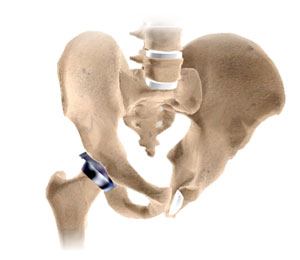Hip Resurfacing

An alternative to total hip replacement is hip resurfacing.
This is a surgical procedure in which the damaged parts of the femoral head are trimmed and then covered with a metal cap. The arthritic bone of the socket is removed and replaced with metal implant.
Unfortunately not many patients are anatomically suitable for resurfacing. In addition metal / metal bearings have uncommon concerns about metal wear particles causing local tissue damage.
Indications and contraindications
Your Surgeon may recommend hip resurfacing surgery if you suffer from severe hip arthritis affecting your quality of life and your symptoms have not been relieved with conservative treatment options such as medications, injections, and physical therapy. Read More
Younger, larger-framed patients with strong and healthy bone are potentially suitable candidates for hip resurfacing surgery.
Hip resurfacing surgery is not recommended in patients with known metal hypersensitivities, osteoporosis, diabetes, impaired kidney function, and large areas of dead bone (avascular necrosis).
Surgical procedure
Hip resurfacing surgery is performed with the patient under spinal or general anaesthesia.
Your surgeon makes an incision to expose the hip joint. The femoral head is displaced from its socket, trimmed of the damage using special instruments, and fitted with a metal cap. The damaged bone and cartilage lining the socket is removed and a metal cup is inserted. Finally, the femoral head is repositioned into the socket, and the incision is closed.
Advantages of hip resurfacing
The potential advantages of hip resurfacing over total hip replacement include:
- Easier to revise: Components used in both procedures usually wear out, loosen or fail after a period of 10 to 20 years or more, requiring revision surgery. As hip resurfacing involves less removal of bone, the revision surgery should be easier to perform.
- More natural walking pattern - debatable
- Greater range of hip motion - debatable
- Achieves a slightly higher level of function
Disadvantages of hip resurfacing
The disadvantages of hip resurfacing are:
- Femoral neck fracture: There is a likelihood of femoral neck fracture with hip resurfacing, which eventually necessitates a total hip replacement. (2-10%)
- Metal ion risk: Tiny metal particles or ions produced by the movement of the metal ball against the metal socket may produce an allergic/toxic reaction causing pain and swelling and tissue damage
- Difficulty: Hip resurfacing is a more difficult procedure to perform, requiring a larger incision.
Risks and complications
As with any surgery, complications are rare but can occur. Hip resurfacing patients may have complications including:
- Formation of blood clots in the leg veins
- Injury to nerves or blood vessels
- Infection
- Femoral neck fracture
- Dislocation






